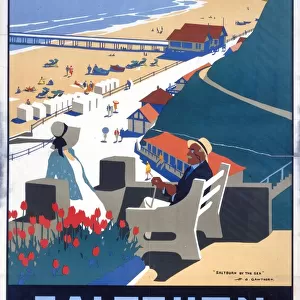Home > Europe > United Kingdom > England > Cleveland
Bifolium Excised from a Carolingian Gradual (verso), c. 830-860. Creator: Unknown
![]()

Wall Art and Photo Gifts from Heritage Images
Bifolium Excised from a Carolingian Gradual (verso), c. 830-860. Creator: Unknown
Bifolium Excised from a Carolingian Gradual (verso), c. 830-860. This bifolium, or double-leaf, does not contain decorated letters but rather " emphasized" letters. These were enlarged and pushed out into the margins to call attention to the eye. Such emphasized letters originated in late classical times and were the precursor to the decorated initial developed by medieval scribes. The purple-stained vellum (now faded to a deep pink) with its text written in gold and silver inks (now turned black) suggested great luxury with its sumptuous appearance. In Mediterranean regions, the purple dye was obtained from murex, a shell-fish dye. In northern Europe, plant dyes were used as an alternative
Heritage Images features heritage image collections
Media ID 19621268
© Heritage Art/Heritage Images
FEATURES IN THESE COLLECTIONS
> Animals
> Fishes
> Related Images
> Europe
> United Kingdom
> England
> Cleveland
EDITORS COMMENTS
This print showcases a bifolium excised from a Carolingian Gradual, dating back to the 9th century. Created by an unknown artist, this double-leaf manuscript is devoid of decorative letters but instead features "emphasized" letters that were enlarged and pushed out into the margins, drawing immediate attention to the eye. These emphasized letters can be traced back to late classical times and served as precursors to the elaborate decorated initials crafted by medieval scribes. The luxurious appearance of this bifolium is evident in its purple-stained vellum, which has now faded into a deep pink hue. The text itself was originally written in gold and silver inks, although over time these colors have turned black. This sumptuous combination of materials suggests opulence and grandeur. It is worth noting that while Mediterranean regions obtained their purple dye from murex, a shell-fish dye, northern Europe relied on plant dyes as an alternative source. This particular piece hails from either Germany or northeastern France. Preserved within The Cleveland Museum of Art's collection, this Heritage Art photograph captures the intricate details and historical significance of this ancient manuscript fragment. It serves as a testament to the artistic prowess and cultural richness of Carolingian craftsmanship during this period in history.
MADE IN AUSTRALIA
Safe Shipping with 30 Day Money Back Guarantee
FREE PERSONALISATION*
We are proud to offer a range of customisation features including Personalised Captions, Color Filters and Picture Zoom Tools
SECURE PAYMENTS
We happily accept a wide range of payment options so you can pay for the things you need in the way that is most convenient for you
* Options may vary by product and licensing agreement. Zoomed Pictures can be adjusted in the Cart.




